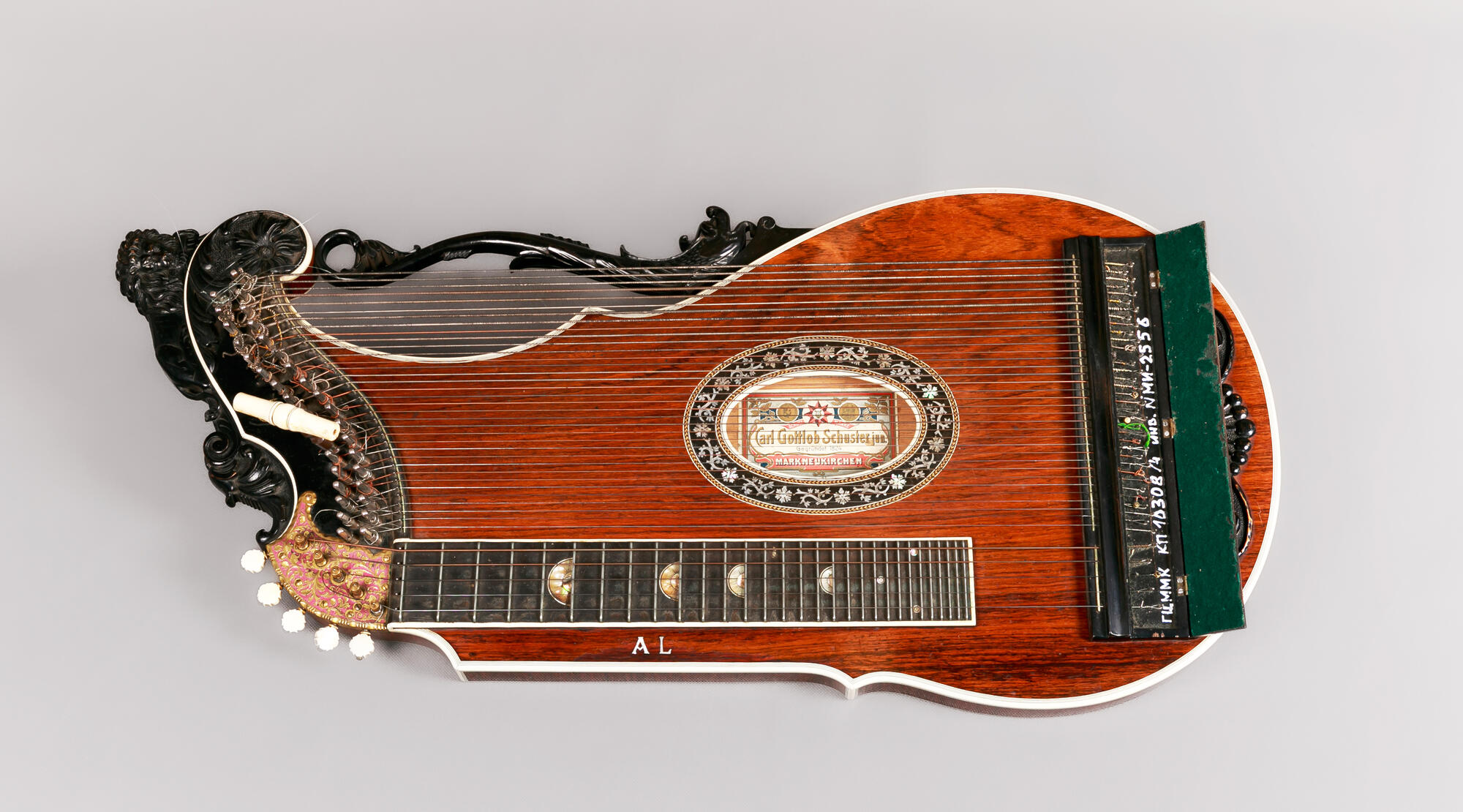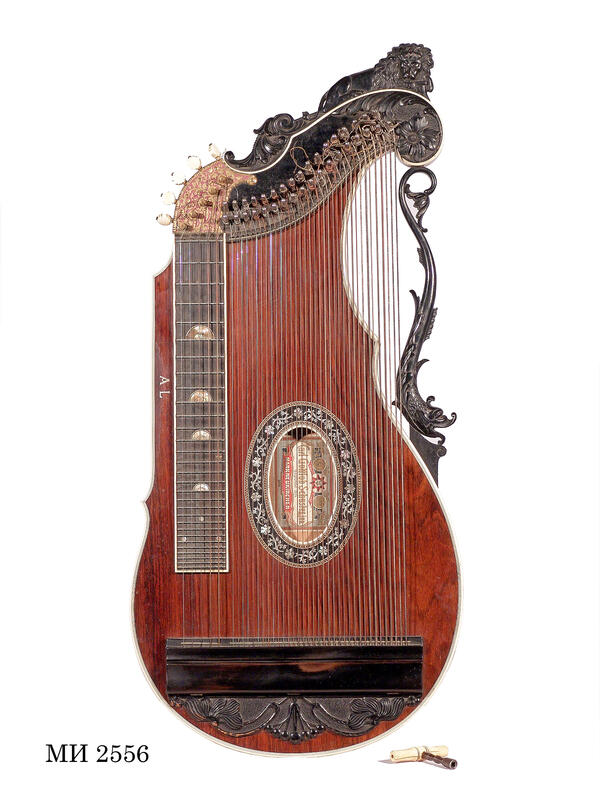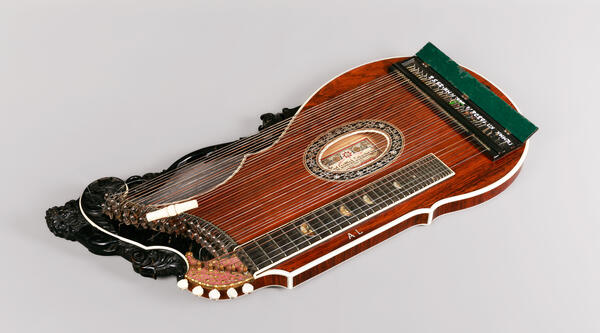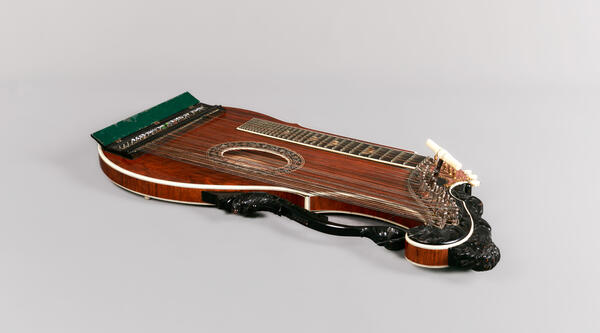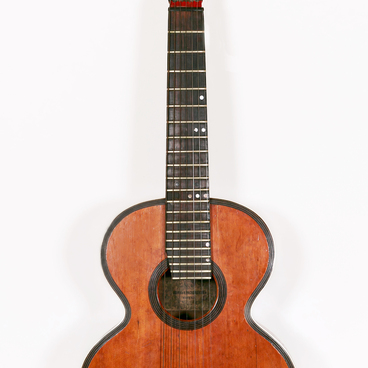The zither is a string instrument that has been known in Western Europe since the late 18th century. It was particularly widespread in Austria and Germany. The zither was equally popular among kings and ordinary folk, and was mostly used as an accompaniment to singing.
The instrument was so popular that zither societies, clubs, and academies were established in many cities. The zither came to Russia in the second half of the 19th century. In 1851, the 22-year-old Austrian musician Franz Bauer came to Russia.
Later, he established a zither school and started giving concerts in Saint Petersburg and various regions across Russia. Between October 1881 and 1904, Franz Bauer published a monthly magazine “The Russian Zither Player.” He also wrote over 400 zither compositions.
Mikhail Glinka referred to the instrument when he wrote a piano romance “To the Zither.” The zither originated from the rectangular wooden instrument known as the “Scheitholt” which literally means “a piece of wood.” This instrument was played by folk musicians in the alpine region.
In the first half of the 19th century, the zither was further improved and became widespread in cities across Europe. Two principal varieties of zithers were developed — the Mittenwald zither with a pear-shaped body, and the Salzburg zither with one rounded side.
Regardless of the instrument’s shape, all its varieties had a flat body made of glued wood. Several strings which are the closest to the player are plucked with a plectrum on the right thumb. The other strings are plucked with fingers and are used to play chords.
The most common European zither was the Salzburg zither. The most advanced version was the concert zither. The instrument from the museum’s collection was manufactured by the German company “Carl Gottlob Schuster.”
This instrument has five melody strings and thirty-five accompaniment strings, with twenty-nine frets on the neck. The melody strings are wound on the pegs, while the accompaniment strings are wound on metal screws and tuned using a special key.
This zither catches the eye with its rich decoration. The oval sound opening is edged with a floral mother-of-pearl pattern. The top part of the instrument is decorated with a lying lion skillfully carved out of ebony wood. The dainty column ends with a dragon head, and down to the bottom of the string holder there is a carved onlay.
The instrument was so popular that zither societies, clubs, and academies were established in many cities. The zither came to Russia in the second half of the 19th century. In 1851, the 22-year-old Austrian musician Franz Bauer came to Russia.
Later, he established a zither school and started giving concerts in Saint Petersburg and various regions across Russia. Between October 1881 and 1904, Franz Bauer published a monthly magazine “The Russian Zither Player.” He also wrote over 400 zither compositions.
Mikhail Glinka referred to the instrument when he wrote a piano romance “To the Zither.” The zither originated from the rectangular wooden instrument known as the “Scheitholt” which literally means “a piece of wood.” This instrument was played by folk musicians in the alpine region.
In the first half of the 19th century, the zither was further improved and became widespread in cities across Europe. Two principal varieties of zithers were developed — the Mittenwald zither with a pear-shaped body, and the Salzburg zither with one rounded side.
Regardless of the instrument’s shape, all its varieties had a flat body made of glued wood. Several strings which are the closest to the player are plucked with a plectrum on the right thumb. The other strings are plucked with fingers and are used to play chords.
The most common European zither was the Salzburg zither. The most advanced version was the concert zither. The instrument from the museum’s collection was manufactured by the German company “Carl Gottlob Schuster.”
This instrument has five melody strings and thirty-five accompaniment strings, with twenty-nine frets on the neck. The melody strings are wound on the pegs, while the accompaniment strings are wound on metal screws and tuned using a special key.
This zither catches the eye with its rich decoration. The oval sound opening is edged with a floral mother-of-pearl pattern. The top part of the instrument is decorated with a lying lion skillfully carved out of ebony wood. The dainty column ends with a dragon head, and down to the bottom of the string holder there is a carved onlay.
